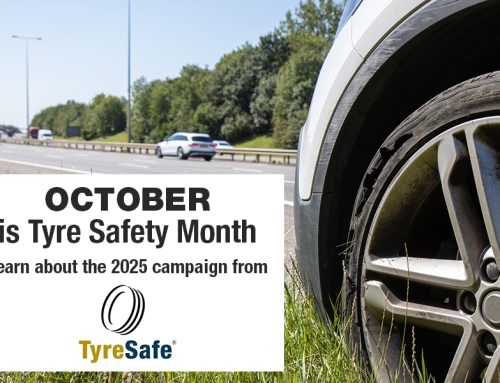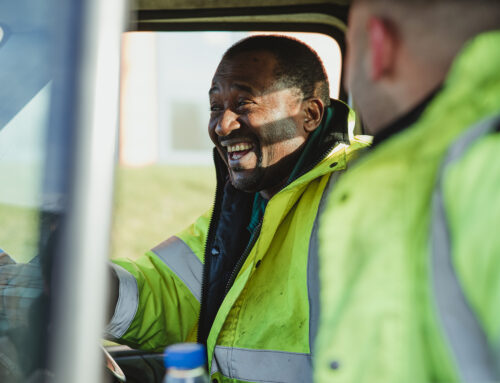Investigating minor incidents can prevent serious collision
At the Health and Safety Event 2024, Driving for Better Business staged a mock trial which outlined the case against a van driver and his employer for causing serious injury by dangerous driving.
It highlighted many of the organisational and driver errors which can contribute to collisions. However, good incident investigation methods can highlight risk factors and mitigations before a collision ever takes place, says incident investigator Andrew Drewary of Road Safety Smart.
Drewary, who led a subsequent session discussing the mock trial’s outcomes and revelations, says that minor incidents tend to reveal all the organisational and driver failings that organisations need to be aware of – and by investigating every bump or near miss, organisations can remove substantial risk from their operations.
He says that 60% of the incidents he investigates show organisational failings.
Incident investigations – who’s qualified?
Most company investigations are carried out by an unqualified and probably reluctant colleague, and they tend to focus primarily on whether the driver was to blame. Good investigations go further, looking not for blame, but for what could have been done differently by each individual in the chain to prevent the collision occurring.
Drewary suggests looking at:
- Human factors, such as fatigue, distraction, medical conditions or stress which could impair driver performance. Had the organisation, or nature of the work contributed to these?
- What qualification, collision history, and training did the driver have? Did they understand the company driving for work policies, and assuming these were adequate, why had the driver deviated from them?
- Who was responsible for loading the vehicles, checking their roadworthiness and ensuring that daily vehicle checks were completed and faults fixed?
- Who plans the routes? Is the driver given sufficient information? Are routes planned with safety in mind – or prioritising speed of service?
- Does the company have a robust driving for work policy which covers all the relevant safety issues? How is it communicated, monitored and enforced?
- Therefore investigators should speak to the whole chain of employees involved, including directors, managers, planners, loaders and trainers, as well as the driver, plus any witnesses to the incident.
A good investigation will examine all the elements of the operation which can contribute to near misses or collisions.
Where is the risk in your fleet?

Charlotte Le Maire, barrister and founder of LMP Legal, and who played the prosecutor in the Driving for Better Business Mock Trial, says: “If you are consistently doing collision investigations across the board, and also for near misses, and collecting that data, you can easily see where most collisions are happening and where your risk is within your fleet.”
Investigations can reveal the gaps between stated policies and day-to-day practices. Drewary says that when drivers or other employees deviate from policy it is almost always to save time. This means that workloads must be achievable without the need for cutting corners or non-compliance.
It’s also important that restrictions for drivers are communicated to the rest of the team. For instance, if drivers are not allowed to take mobile calls while driving, then it’s important that the team does not call them while they are driving. When the policy is in conflict with daily pressures, employees will feel conflicted and start to ignore global rules to accommodate their boss or colleagues.
Driver Data – an opportunity for change
Of course, as with all data, the crucial thing is to act on the insights you discover. In this way, routine collision investigation can help prevent fleets from suffering serious or fatal collisions, as well as driving down incidental vehicle damage and insurance claims.
Good investigations should therefore lead to recommendations, including organisational changes, better monitoring or management, and targeted training for drivers and managers.
“Outcomes are your opportunity for change,” says Drewary.
Le Maire says that a good investigation stress-tests every part of the company’s policy and practices. This also means that if a collision does occur, the company can prove that it actively reviews its procedures and has taken all reasonable steps to ensure safe outcomes. If there are no driving policies, or those policies are never compared with the daily actuality, then the company has little proof that it effectively manages road-risk in line with its legal responsibilities.
Driver Behaviour – when you know, you must act
High levels of speeding tickets (notice of intended prosecution) or parking penalty notices should also be investigated because they reveal a consistent and high-level risk for the operation.
Le Maire notes that many companies are now relying on technological solutions to monitor and report on driver behaviour – but she warns this is a double-edged sword. Companies must act on the data they collect, which means reviewing exception data or footage and taking the appropriate steps to correct problematic behaviours. Legally, once companies have visibility of risk they must act on it, or they will be considered negligent in the eyes of the law.
View the full presentation and the video of the mock trial.
Register with our driving for work policy builder to get free automated updates on the law and good practice examples which you should incorporate in your driving policies.






